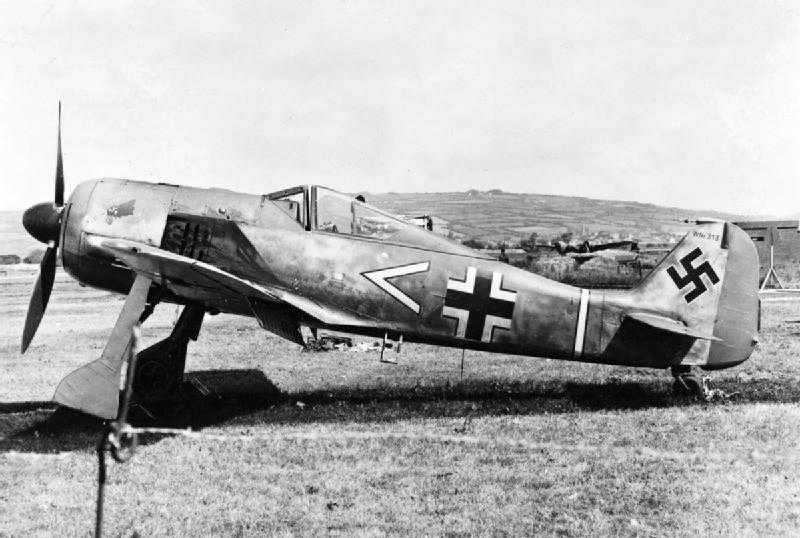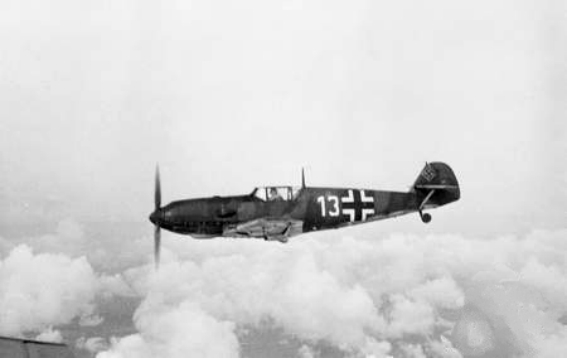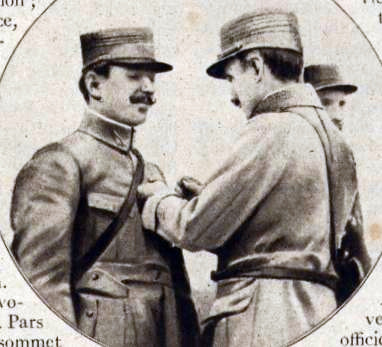|
Wilhelm-Ferdinand Galland
Wilhelm-Ferdinand "Wutz" Galland (23 October 1914 – 17 August 1943) was a German Luftwaffe military aviator and fighter ace during World War II. He is credited with 55 aerial victories achieved in 186 combat missions. All his victories were claimed over the Western Front and in Defense of the Reich. This figure included seven four-engine bombers and 37 Supermarine Spitfire fighters. Born in Bochum, Galland grew up in the Weimar Republic and Nazi Germany. He joined the military service in the Wehrmacht in 1935, initially serving with the anti-aircraft artillery of the Luftwaffe. Upon his request in late 1940, he transferred to the '' Jagdwaffe'' (fighter force). Following flight training, he was posted to ''Jagdgeschwader'' 26 "Schlageter" (JG 26—26th Fighter Wing) in June 1941. Flying with this wing, Galland claimed his first aerial victory on 23 July 1941 on the Western Front over a Royal Air Force fighter aircraft. He was made '' Staffelkapitän'' (squadron leader) ... [...More Info...] [...Related Items...] OR: [Wikipedia] [Google] [Baidu] |
Bochum
Bochum (, ; ; ; ) is a city in North Rhine-Westphalia. With a population of 372,348 (April 2023), it is the sixth-largest city (after Cologne, Düsseldorf, Dortmund, Essen and Duisburg) in North Rhine-Westphalia, the most populous German federal state, and the 16th-largest city in Germany. On the Ruhr Heights () hill chain, between the rivers Ruhr to the south and Emscher to the north (tributaries of the Rhine), it is the second largest city of Westphalia after Dortmund, and the fourth largest city of the Ruhr after Dortmund, Essen and Duisburg. It lies at the centre of the Ruhr, Germany's largest urban area, in the Rhine-Ruhr Metropolitan Region, the second biggest metropolitan region by GDP in the European Union, and belongs to the region of Arnsberg. There are nine institutions of higher education in the city, most notably the Ruhr University Bochum (), one of the ten largest universities in Germany, and the Bochum University of Applied Sciences (). Geography Geograph ... [...More Info...] [...Related Items...] OR: [Wikipedia] [Google] [Baidu] |
Adolf Galland
Adolf Josef Ferdinand Galland (19 March 1912 – 9 February 1996) was a German Luftwaffe general and flying ace who served throughout the Second World War in Europe. He flew 705 combat missions and fought on the Western Front and in the Defence of the Reich. On four occasions, he survived being shot down, and he was credited with 104 aerial victories, all of them against the Western Allies. Galland, who was born in Westerholt, Province of Westphalia, Kingdom of Prussia, in the German Empire, became a glider pilot in 1929 before he joined the Luft Hansa. In 1932, he graduated as a pilot at the '' Deutsche Verkehrsfliegerschule'' (German Commercial Flyers' School) in Braunschweig before applying to join the Reichswehr of the Weimar Republic later in the year. Galland's application was accepted, but he never took up the offer. In February 1934, he was transferred to the Luftwaffe. In 1937, during the Spanish Civil War, he volunteered for the Condor Legion and flew ground attac ... [...More Info...] [...Related Items...] OR: [Wikipedia] [Google] [Baidu] |
Staffelkapitän
''Staffelkapitän'' is a command appointment, rather than a military rank, in the air force units of German-speaking countries. The rank normally held by a ''Staffelkapitän'' has changed over time. In the present-day German ''Luftwaffe'' – part of the ''Bundeswehr'' – the position is usually held by an ''Oberstleutnant'' (lieutenant colonel) or ''Major''. World War II In the ''Luftwaffe'' of the World War II ''Wehrmacht'', a full-strength ''Staffel'' had nine to 12 operational aircraft; as such it was slightly smaller than a full-strength squadron (at least 12 aircraft) in the air forces of other countries. Hence a ''Luftwaffe'' ''Staffelkapitän'' usually held the rank of an ''Oberleutnant'' or ''Hauptmann''. (In other countries, a squadron was normally commanded by, at the very least, a Major or direct equivalent rank, such as an RAF Squadron Leader.) An acting or newly-appointed ''Staffelkapitän'', for the first weeks of their assignment, was known as ''Staffelführ ... [...More Info...] [...Related Items...] OR: [Wikipedia] [Google] [Baidu] |
Royal Air Force
The Royal Air Force (RAF) is the Air force, air and space force of the United Kingdom, British Overseas Territories and Crown Dependencies. It was formed towards the end of the World War I, First World War on 1 April 1918, on the merger of the Royal Flying Corps (RFC) and the Royal Naval Air Service (RNAS). Following the Allies of World War I, Allied victory over the Central Powers in 1918, the RAF emerged as the largest air force in the world at the time. Since its formation, the RAF has played History of the Royal Air Force, a significant role in Military history of the United Kingdom, British military history. In particular, during the Second World War, the RAF established Air supremacy, air superiority over Nazi Germany's Luftwaffe during the Battle of Britain, and led the Allied strategic bombing effort. The RAF's mission is to support the objectives of the British Ministry of Defence (United Kingdom), Ministry of Defence (MOD), which are to "provide the capabilities nee ... [...More Info...] [...Related Items...] OR: [Wikipedia] [Google] [Baidu] |
Jagdgeschwader 26
''Jagdgeschwader'' 26 (JG 26) ''Schlageter'' was a German fighter-wing of World War II. It was named after Albert Leo Schlageter, a World War I veteran, Freikorps member, and posthumous Nazi martyr, arrested and executed by the French for sabotage in 1923. The wing fought predominantly against the Western Allies. Formed in May 1939, JG 26 spent the Phoney War period guarding Germany's western borders following the German invasion of Poland and the outbreak of World War II. In May and June 1940 it served in the Battle of Belgium and Battle of France. From July 1940 it operated over England in the Battle of Britain under the command of Adolf Galland, future '' General der Jagdflieger''. JG 26 remained in France and Belgium fighting against the RAF Fighter Command Circus offensive in 1941 and 1942, with considerable tactical success. In 1943 it faced the USAAF Eighth Air Force, and along with the rest of the Luftwaffe fighter force, was worn down over Western Euro ... [...More Info...] [...Related Items...] OR: [Wikipedia] [Google] [Baidu] |
Jagdwaffe
''Jagdwaffe'' (), was the German ''Luftwaffes fighter force during World War II. Aircraft The ''Jagdwaffe'' used many aircraft, including the Messerschmitt Bf 109, Bf 110, Me 163, Me 262, Focke-Wulf Fw 190, Ta 152, and Heinkel He 162. References * Further reading *Luftwaffe Organization The Luftwaffe () was the aerial-warfare branch of the before and during World War II. Germany's military air arms during World War I, the of the Imperial Army and the of the Imperial Navy, had been disbanded in May 1920 in accordance w ... Military units and formations of the Luftwaffe {{germany-mil-unit-stub ... [...More Info...] [...Related Items...] OR: [Wikipedia] [Google] [Baidu] |
Anti-aircraft Warfare
Anti-aircraft warfare (AAW) is the counter to aerial warfare and includes "all measures designed to nullify or reduce the effectiveness of hostile air action".AAP-6 It encompasses surface-based, subsurface (Submarine#Armament, submarine-launched), and air-based weapon systems, in addition to associated sensor systems, command and control arrangements, and passive measures (e.g. barrage balloons). It may be used to protect naval, army, ground, and air forces in any location. However, for most countries, the main effort has tended to be homeland defense. Missile defense, Missile defense is an extension of air defence, as are initiatives to adapt air defence to the task of intercepting any projectile in flight. Most modern anti-aircraft (AA) weapons systems are optimized for short-, medium-, or long-range air defence, although some systems may incorporate multiple weapons (such as both autocannons and surface-to-air missiles). 'Layered air defence' usually refers to multiple 't ... [...More Info...] [...Related Items...] OR: [Wikipedia] [Google] [Baidu] |
Wehrmacht
The ''Wehrmacht'' (, ) were the unified armed forces of Nazi Germany from 1935 to 1945. It consisted of the German Army (1935–1945), ''Heer'' (army), the ''Kriegsmarine'' (navy) and the ''Luftwaffe'' (air force). The designation "''Wehrmacht''" replaced the previously used term (''Reich Defence'') and was the manifestation of the Nazi regime's efforts to German rearmament, rearm Germany to a greater extent than the Treaty of Versailles permitted. After the Adolf Hitler's rise to power, Nazi rise to power in 1933, one of Adolf Hitler's most overt and bellicose moves was to establish the ''Wehrmacht'', a modern offensively-capable armed force, fulfilling the Nazi regime's long-term goals of regaining lost territory as well as gaining new territory and dominating its neighbours. This required the reinstatement of conscription and massive investment and Military budget, defence spending on the arms industry. The ''Wehrmacht'' formed the heart of Germany's politico-military po ... [...More Info...] [...Related Items...] OR: [Wikipedia] [Google] [Baidu] |
Nazi Germany
Nazi Germany, officially known as the German Reich and later the Greater German Reich, was the German Reich, German state between 1933 and 1945, when Adolf Hitler and the Nazi Party controlled the country, transforming it into a Totalitarianism, totalitarian dictatorship. The Third Reich, meaning "Third Realm" or "Third Empire", referred to the Nazi claim that Nazi Germany was the successor to the earlier Holy Roman Empire (800–1806) and German Empire (1871–1918). The Third Reich, which the Nazis referred to as the Thousand-Year Reich, ended in May 1945, after 12 years, when the Allies of World War II, Allies defeated Germany and entered the capital, Berlin, End of World War II in Europe, ending World War II in Europe. After Hitler was appointed Chancellor of Germany in 1933, the Nazi Party began to eliminate political opposition and consolidate power. A 1934 German referendum confirmed Hitler as sole ''Führer'' (leader). Power was centralised in Hitler's person, an ... [...More Info...] [...Related Items...] OR: [Wikipedia] [Google] [Baidu] |
Weimar Republic
The Weimar Republic, officially known as the German Reich, was the German Reich, German state from 1918 to 1933, during which it was a constitutional republic for the first time in history; hence it is also referred to, and unofficially proclaimed itself, as the German Republic. The period's informal name is derived from the city of Weimar, which hosted the constituent assembly that established its government. In English, the republic was usually simply called "Germany", with "Weimar Republic" (a term introduced by Adolf Hitler in 1929) not commonly used until the 1930s. The Weimar Republic had a semi-presidential system. Toward the end of the First World War (1914–1918), Germany was exhausted and suing for peace, sued for peace in desperate circumstances. Awareness of imminent defeat sparked a German Revolution of 1918–1919, revolution, Abdication of Wilhelm II, the abdication of Kaiser Wilhelm II, the proclamation of the Weimar Republic on 9 November 1918, and formal cessa ... [...More Info...] [...Related Items...] OR: [Wikipedia] [Google] [Baidu] |
Supermarine Spitfire
The Supermarine Spitfire is a British single-seat fighter aircraft that was used by the Royal Air Force and other Allies of World War II, Allied countries before, during, and after World War II. It was the only British fighter produced continuously throughout the war. The Spitfire remains popular among enthusiasts. Around List of surviving Supermarine Spitfires, 70 remain airworthy, and many more are static exhibits in aviation museums throughout the world. The Spitfire was a short-range, high-performance interceptor aircraft designed by R. J. Mitchell, chief designer at Supermarine Aviation Works, which operated as a subsidiary of Vickers-Armstrong from 1928. Mitchell modified the Spitfire's distinctive elliptical wing (designed by Beverley Shenstone) with innovative sunken rivets to have the thinnest possible cross-section, achieving a potential top speed greater than that of several contemporary fighter aircraft, including the Hawker Hurricane. Mitchell continued to refine ... [...More Info...] [...Related Items...] OR: [Wikipedia] [Google] [Baidu] |
Fighter Ace
A flying ace, fighter ace or air ace is a military aviation, military aviator credited with shooting down a certain minimum number of enemy aircraft during aerial combat; the exact number of aerial victories required to officially qualify as an ace varies, but is usually considered to be five or more. The concept of the "Ace (military), ace" emerged in 1915 during World War I, at the same time as aerial dogfighting. It was a propaganda term intended to provide the home front with a cult of the hero in what was otherwise a Attrition warfare, war of attrition. The individual actions of aces were widely reported and the image was disseminated of the ace as a chivalrous knight reminiscent of a bygone era. For a brief early period when air-to-air combat was just being invented, the exceptionally skilled pilot could shape the battle in the skies. For most of the war, however, the image of the ace had little to do with the reality of air warfare, in which fighters fought in formation an ... [...More Info...] [...Related Items...] OR: [Wikipedia] [Google] [Baidu] |






